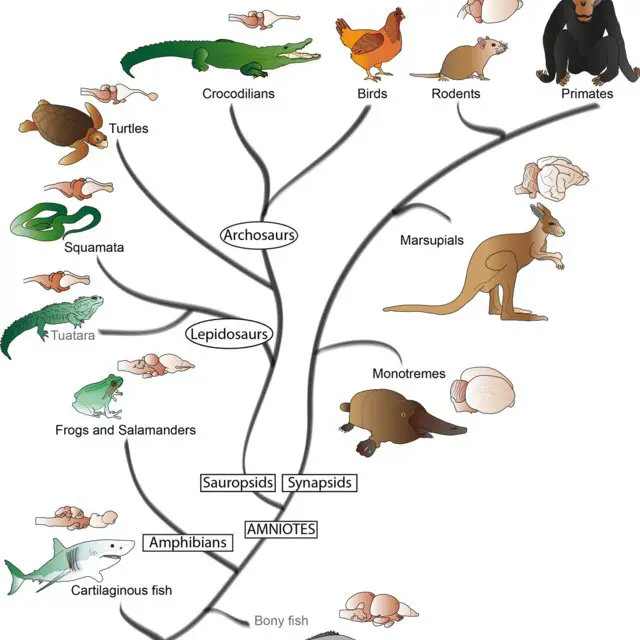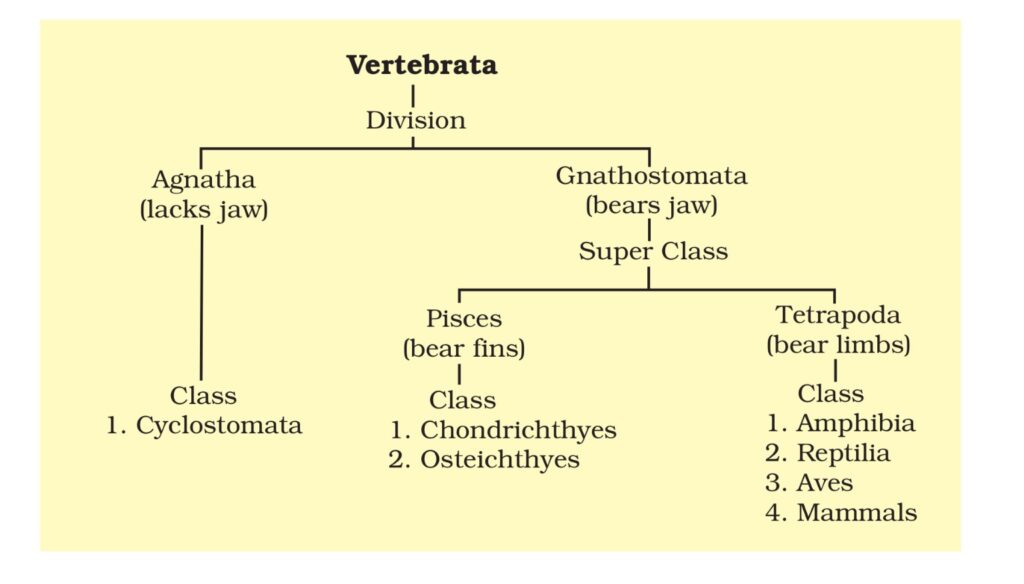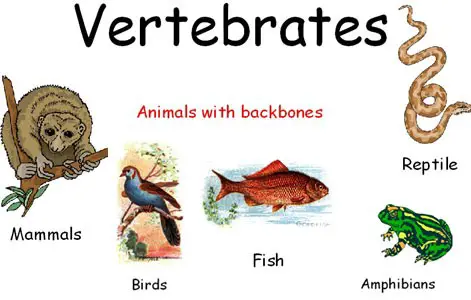The origin of Vertebrate is assumed from the lower Chordata, there is no exact evidence for Chordata ancestors because the ancestral Chordata was soft-bodied. The soft-bodied ancestral Chordata did not leave any fossil as evidence. Most of the Chordata ancestors are extinct today the primitive Chordata are present today and the resemblance of Protochordata with some invertebrates proves that the invertebrates give rise to the Vertebrate during evolution.
The common features between Protochordata and some invertebrates are bilateral body summary, longitudinal body axis, triploblastic, metameric segmentation and all those similarities point us to the origin of Chordata from the invertebrates.

Table of Contents
Theories of Invertebrates Ancestry of Chordata:
Some workers believe that Chordata arrives from some invertebrates directly while some workers believe that the Chordata did not evolve directly from invertebrates. Invertebrates form some intermediate Protochordata who later evolved into early Chordata.
Some workers suggest that Chordata evolved from Echinodermata, some suggest Annelida, some suggest Arthropods, some suggest Phoronida, some suggest Coelenterata. But all logic also have their drawback, only Echinodermata have some strong logic and most of the workers believe in Echinodermata Ancestry of Chordata.
Deuterostome Line of Chordata:
The Deuterostome phyla, phylum Echinodermata, phylum Hemichordata, and phylum Chordata all show great similarity in some aspects which shows they have very close evolutionary relationships.
- In dueterostome the early cleavage is indeterminate so each of the blastomeres can develop the whole organism.
- During embryonic development their archenteron form a fold which later develop enterocoelous type of coelom.
- The pore of gastrula do not form the mouth, the blastopore form the anus and the mouth is formed as secondary.
- The free swimming pelagic larva of Echinodermata show great similarity with the larval stage of Protochordata.
- All the Deuterostome phyla show resemblance in their biochemical pathways, the phosphagen creatine is used by most of dueterostome animals.
- All members of dueterostome phyla show much similarity in their protein structure which indicates their close relationship in the course of evolution.

Echinoderm Ancestry:
The phylum Echinodermata shows so much similarity with their larval and adult stage that most of the workers assume that Chordata arises from the Echinodermata. Especially the Tornaria larva of Hemichordata shows great similarity with the Bipinnaria larva and it gives a strong indication that Echinodermata evolved into the early ancestors of phylum Chordata.
The ciliated bands, bilateral symmetry, transparent body, and some other features are common in Hemichordata and Echinodermata but the apical plate with eyespot is not common in them. Some workers believe that the neotenic larva of Echinodermata, Auricularia become sexually mature and evolved into Chordata.
Hemichordate Ancestry:
The sedentary lifestyle, the dorsal hollow nerve cord, pharyngeal gill slits of the Hemichordata is similar to the Chordata. But the presence of notochord in Chordata does not match with the Hemichordata and the body plan also shows many dissimilarities.
The striking difference between Hemichordata and Chordata does not allow us to place them under a single group, so we place Hemichordata into a separate phylum from the phylum Chordata.
Urochordate Ancestry:
The sessile lifestyle in Urochordata and some other features suggest that Chordata arise from Urochordata. But the body plan of the Urochordata is completely different than the body plan of the Chordata so we can not set an evolutionary link.

But the free-swimming tadpole larval stage, the post-anal muscular tail, pharyngeal nerve cord, notochord of Urochordata show great resemblance with Chordata. But this resemblance is only in the larval stage but the adult stage is much different, it can be explained by logic. The logic is that the Urochordata larva becomes neotenic and finally evolves into early Chordata and the Ascidian larva which undergoes retrogressive metamorphosis becomes adult Urochordata.
Detailed Study On Subphylum Vertebrata Definition Characteristics Classification Examples and Diagram
Reference
Basis of Classification in Subphylum Vertebrata
Phylogeny of Subphylum Vertebrata
An Overview of Classification in Subphylum Vertebrata
Subphylum Vertebrata and its Diversity
Cephalochordata Characteristics Features Classification Examples and Diagram
Urochordata Classification Morphology Characteristic Features
Characteristics Features of Hemichordata
General Comparison of Hemichordata Urochordata and Cephalochordata
Comparative Study of Digestive System in Hemichordata Cephaochordata and Urochordata
Hi Everyone!!! Welcome to Imaluop. Imaluop always try to learn some new and he want to share to other people. Here we will try to learn various topics on Science, specially on Biological Sciences.